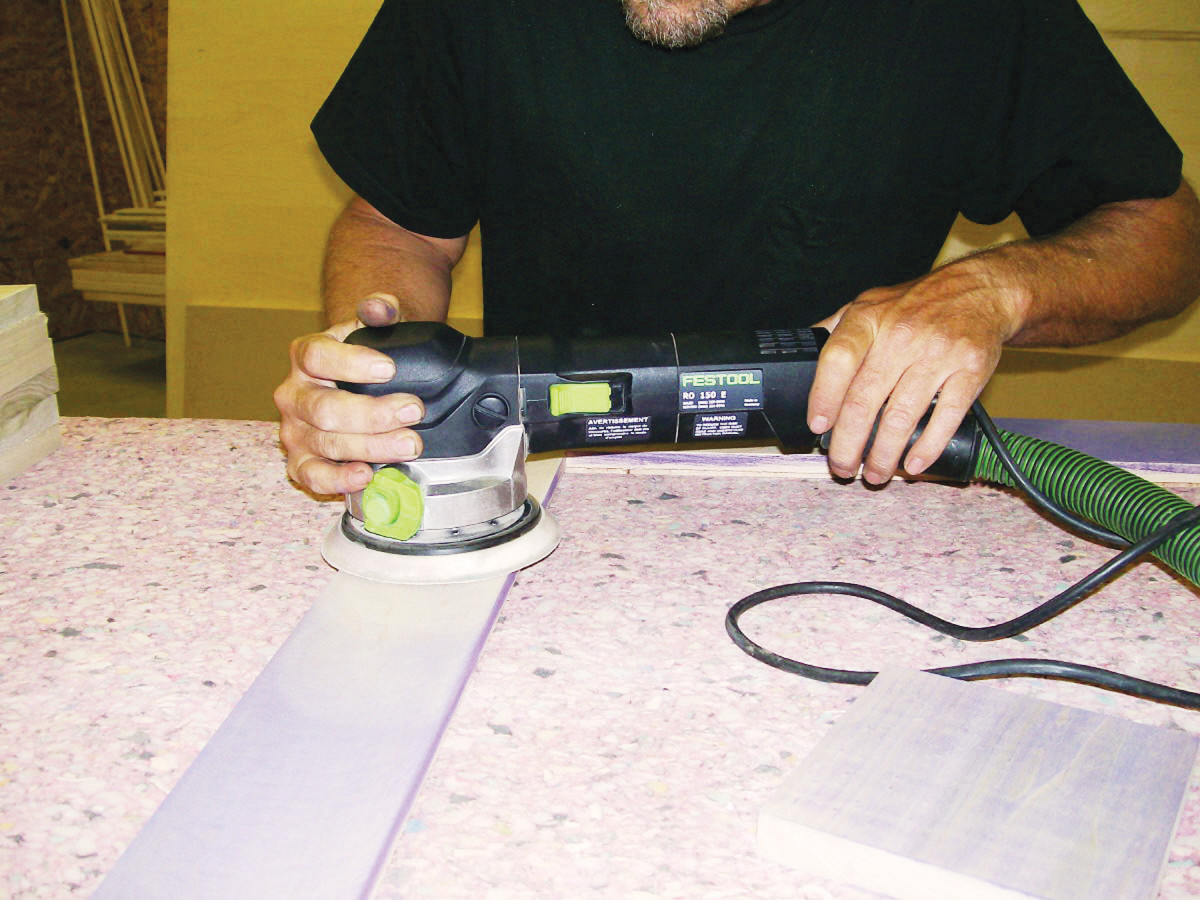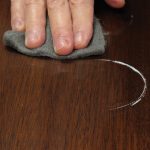We may receive a commission when you use our affiliate links. However, this does not impact our recommendations.
I’m making and installing approx. 5000-bd.ft. of hard maple trim. Keeping track of what I’ve already sanded is difficult, so before sanding, I rub artists non-oil pastel chalks (also available at artist supply stores) onto the wood and into the grain with a dry staining sponge.
 Then I simply sand until all the chalk is gone. In addition to showing what has and hasn’t been sanded, the chalk makes blemishes and sanding marks stand out. Non-oil pastel chalk is a powder that doesn’t stick to wood. If any chalk remains in the pores after sanding, I simply dampen the surface with water. This raises the chalk to the surface, so it sands off easily. I use dark-color chalk on light-colored woods and light-color chalk on dark wood. –Tim Jones
Then I simply sand until all the chalk is gone. In addition to showing what has and hasn’t been sanded, the chalk makes blemishes and sanding marks stand out. Non-oil pastel chalk is a powder that doesn’t stick to wood. If any chalk remains in the pores after sanding, I simply dampen the surface with water. This raises the chalk to the surface, so it sands off easily. I use dark-color chalk on light-colored woods and light-color chalk on dark wood. –Tim Jones
Here are some supplies and tools we find essential in our everyday work around the shop. We may receive a commission from sales referred by our links; however, we have carefully selected these products for their usefulness and quality.










